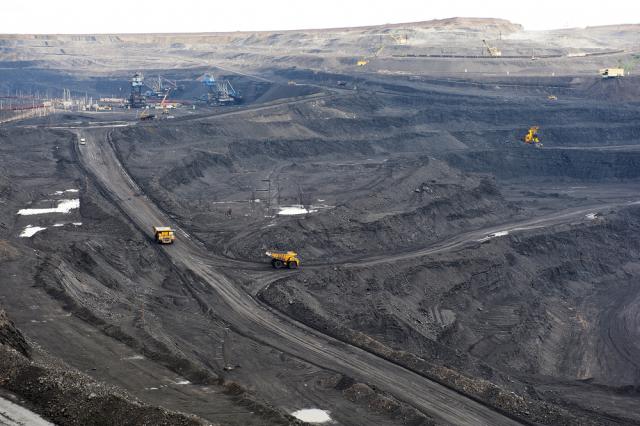In a missive titled “White Paper: Financial Risks of Investments in Coal,” As You Sow concludes that coal is becoming an increasingly risky investment with each passing day. The fracking boom and the up-and-coming renewable energy sector are quickly superseding King Coal’s empire as a source of power generation, As You Sow concludes in the report.
As You Sow chocks up King Coal’s ongoing demise to five factors, quoting straight from the report:
1. Increasing capital costs for environmental controls at existing coal plants and uncertainty about future regulatory compliance costs
2. Declining prices for natural gas, a driver of electric power prices in competitive markets
3. Upward price pressures and price volatility of coal
4. High construction costs for new coal plants and unknown costs to implement carbon capture and storage
5. Increasing competitiveness of renewable generation resources
Prong one pertains to what groups like the American Legislative Exchange Council (ALEC), the Republican Party at-large, and the conservative media echo chamber have coined a “War on Coal” and a “Regulatory Train Wreck,” echoing what the shale gas industry’s PR squad has coined a “War on Shale Gas.”
According to As You Sow, regulations have tied the hands of the coal industry to a sufficient level that it’s no longer as lucrative of a venture to make a capital investment into coal as it is to invest in the shale gas and renewable energy industries. “Uncertainty about future regulations plagues coal plant operators who face the incremental imposition of more stringent standards over time,” As You Sow explained.
Shale Gas “Killing” Coal Power Plants
Most importantly, highlighted in prong two, the U.S. is in the midst of a shale gas boom, described by Cheniere Energy CEO Charif Souki as “stupefyingly large” on this weekend’s episode of Fareed Zakaria’s CNN show “GPS.”
So large, in fact, that for the first time in U.S. history, gas power generation surpassed coal power generation’s place at the commanding heights of the marketplace. Thus far in 2012, according to the Energy Information Agency‘s latest numbers, nearly twice as many megawatt hours from natural gas have been produced than via coal (381,433 vs. 196,654 thousand MWh).
“What that means is, literally, natural gas is going to kill more coal-fired power plants than the EPA regulations,” Michael Zenker, a coal analyst for Barclays told NPR in a July 2012 story in which he explained the signifance of the ongoing shale gas boom.
The ecological hazards of shale gas are well-known and well-documented, with scientists at Cornell University showing that the entire lifecycle of shale gas proves to be dirtier than coal. The Post Carbon Institute also called shale gas a “bridge fuel to nowhere” in a June 2011 report.
The economic hazards are lesser known, but increasingly so due to the investigative reporting conducted by The New York Times and Rolling Stone, and As You So offered its own cautionary note on the future of shale gas, writing,
Natural gas will – in time – face many of the same risks as coal: price increases and volatility as the easily recoverable resources are depleted, more stringent environmental regulations that will demand capital investments, and competition from wind, solar, and other forms of renewable energy.
Exports Creating “Volatile” Market for Coal…and Shale Gas?
Export is the current name of the game for the coal industry, like its fossil fuel partner, the shale gas industry and LNG (liquified natural gas) exports. Coal exports from the Power River Basin are the fossil of the day. All the while, production is in steep decline in Central Appalachia.
“Doyle Trading Consultants calculated that the U.S. coal supply declined more than 100 million tons in 2012 and that many of the cuts, particularly in Central Appalachia, are permanent,” explained As You Sow.
This new market trend – in which the U.S. is more or less a “resource colony” for the global coal commodities market – has made coal a more “volatile” investment, according to As You Sow.
The Jig Is Up on Coal…and Shale Gas?
The jig is up on coal, As You Sow concludes, explaining that “the prognosis for coal as a financially viable source from which to generate electricity continues to decline” and that 46 coal plants have been retired since July 2012, with dozens more planned for retirement between now and 2016.
Ending on an optimistic note, As You Sow sees the centralized role that coal and gas enjoy as sources of power generation in their waning days, concluding:
More importantly for the business model of electric utilities, business and residential consumers will continue to reduce their energy consumption through efficiency and demand management, and will move increasingly to distributed, rather than centralized, generation as the price of solar technology declines.
With a recent investigation conducted by Reuters showing that, like Michigan’s, Ohio’s shale gas assets may be far smaller than the shale gas industry has boasted. If anything, this foreshadows that the “golden age of gas” may soon become more of a “bust” than a “boom,” as originally advertised by the industry.
Image Credit: Shutterstock | JVrublevskaya
Subscribe to our newsletter
Stay up to date with DeSmog news and alerts






